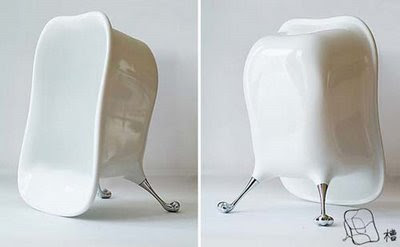
Confluences is a new collection of upholstered seating that French designer Philippe Nigro has created for the furniture manufacturer
Ligne Roset. Furniture manufacturers Ligne Roset presented a collection of seating by designer Philippe Negro at
IMM Cologne this week. The range consists of brightly-coloured, upholstered lounge chairs that fit together, appearing to cuddle up to each other.

Information from Ligne Roset:
“How can one design a settee which satisfies the requirements of the majority of users? Different people have different physiognomies. And then there is the subjectivity of taste. CONFLUENCES is a ‘reconciliatory’ settee, since it draws its inspiration from such differences”. CONFLUENCES attempts to supply an answer to an ergonomic problem, and in this way becomes a playground for plastic forms and colours in many shade variations.

CONFLUENCES is doubtless one of the bedrocks of the new trend for‘counterforms’, with its characteristic overlapping arrangement of elements in the style of a puzzle or yin-yang. CONFLUENCES is a breath of fresh air which breaks with all the normal conventions of upholstered furniture. This piece will please not only lovers of radical design, but also all those who are seduced by a multiplicity of possible sitting positions, and the as yet unheard- of conviviality offered by its colourful, unbridled compositions with evocative names such as the ‘Toi et moi’ (‘You and me’) love seat, the ‘small conversation settee’ and ‘large conversation settee’, or the 4-seat settee with two integral chaises longues.

At first glance, CONFLUENCES appears to be the fruit of the designer’s creative musings on the theme of uncompromising volumes. And yet, one will be amazed to discover that it is simply the result of a reasoned approach on the part of the designer, with a view to offering the best possible response to customer demand for personalised comfort.

Philippe Nigro: “How can one dream up a settee capable of satisfying the greatest possible number of users? Their body shapes, their tastes? The CONFLUENCES settee unites them all, for it draws its inspiration from variety.”

One possible answer was to offer a variety of seat depths and back heights on a single settee, in order to match the comfort with the expectations of the individual user. This approach naturally came with the disadvantage of having to make varying proportions work in a harmonious way in terms of form.































